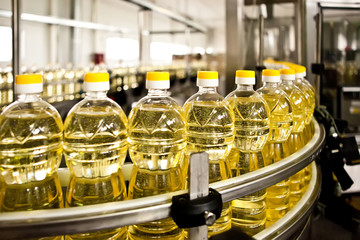This article was originally published by Rhoda Wilson at The Daily Exposé.
Global cancer incidence is increasing, particularly among those under 50, with a notable rise in breast, uterine, prostate, lung, colorectal, pancreatic, and stomach cancers, with early-onset breast cancer incidence climbing by 3.8% annually between 2016 and 2019.
The global death toll from early-onset cancers has surged by nearly 28% from 1990 to 2019, with predictions indicating a potential rise in mortality rates. The World Health Organisation predicts more than 35 million new cancer cases in 2050 – a 77% increase from the estimated 20 million cancer cases that occurred in 2022.
A significant factor in the increase in cancer cases is likely the COVID-19 injection. However, Dr. Mercola is convinced that excessive intake of linoleic acid (“LA”) was already a key issue contributing to rising cancer rates before the COVID era.
Dietary changes, particularly the increase in obesity and consumption of processed foods rich in LA, a polyunsaturated fat found in seed oils, have been identified as major contributors to the rising cancer rates.
Why Are so Many Young People Getting Cancer?
According to the latest statistics, global cancer incidence is on the rise, especially among younger people. Between 1990 and 2019, the incidence of 29 cancers rose worldwide in those younger than 50, with rates rising faster among women. Cancers on the rise include breast, uterine, prostate, lung, colorectal, pancreatic, and stomach cancers.
Between 2016 and 2019, early-onset breast cancer incidence rose by 3.8% annually.1 As reported by the journal Nature in mid-March 2024,2 even teens are now being diagnosed with “improbable” cancers previously only seen in seniors, such as advanced gastrointestinal cancers. And it’s not just happening in the US. Oncologists in China and India have also noted this trend.3 According to Nature:4
Statistics from around the world are now clear: the rates of more than a dozen cancers are increasing among adults under the age of 50. This rise varies from country to country and cancer to cancer, but models based on global data predict that the number of early-onset cancer cases will increase by around 30% between 2019 and 2030.5
In the United States, colorectal cancer – which typically strikes men in their mid-60s or older – has become the leading cause of cancer death among men under 50.6 In young women, it has become the second leading cause of cancer death …
[The] number of deaths from early-onset cancers has risen by nearly 28% between 1990 and 2019 worldwide. Models also suggest that mortality could climb …
As calls mount for better screening, awareness and treatments, investigators are scrambling to explain why rates are increasing. The most likely contributors – such as rising rates of obesity and early-cancer screening – do not fully account for the increase.
Likely Culprits
The conventional medical model is beyond clueless when they believe the solution to this dilemma is better screening. This is unadulterated nonsense and fails to address the cause, which is a disruption in the microbiome that obliterates the healthy obligate anaerobes in the large intestine.
When your body fails to make enough cellular energy because the mitochondria are dysfunctional as a result of being regularly poisoned by LA and estrogen, they simply are unable to maintain an environment that allows the healthy beneficial bacteria to grow.
When the beneficial bacteria disappear, they are replaced by facultative anaerobes that tolerate oxygen, as a result of the lack of competitive inhibition by the beneficial bacteria. It is these bacteria that are increasing GI cancers, not a lack of screening.
Excessive LA Intake Promotes Cancer
The Nature article7 does, however, point to there being a dietary culprit, stating “The prominence of gastrointestinal cancers and the coincidence with dietary changes in many countries point to the rising rates of obesity and diets rich in processed foods as likely culprits in contributing to rising case rates.”
While the Nature article does not go into specifics about what it might be about our modern diets that contribute to cancer, my own research has singled out linoleic acid (“LA”) – an omega-6 fat found in seed oils (and hence most processed foods) – as a key contributor.
Like other experts in bioenergetic medicine, I’m convinced that chronic diseases such as Type 2 diabetes, Alzheimer’s, and cancer are bioenergetic diseases rooted in dysfunctional metabolism resulting in poor energy production, and polyunsaturated fats (“PUFAs”) appear to be a primary contributing factor in this chain of events. As reported by bioenergetic researcher Georgi Dinkov in an October 2022 blog post:8
The bad news for PUFA (in this case linoleic acid) just keep piling on. At this point, there is hardly a chronic condition out there that has not been linked to elevated PUFA and/or their peroxidation products.
[A December 2022 study in Antioxidants & Redox Signaling9] makes the argument that PUFA peroxidation byproducts (created by the increased reactive oxygen species (ROS) itself driven by PUFA) such as 4-hydroxynonenal (4-HNE), are the cause of diabetes and cancer.
In fact, the study makes the argument that the two conditions are basically slightly different points on the same spectrum of systemic disease (i.e. cancer being the more severe one).
The study10 published in Antioxidants & Redox Signalling highlights the increased risk diabetic patients face in developing several types of cancer, including hepatocellular carcinoma, pancreatic cancer, colorectal cancer, and breast cancer.

This elevated risk is attributed to several factors that promote cancer growth in diabetic individuals. These factors include insulin resistance, hyperglycemia, dyslipidemia, chronic inflammation, and elevated levels of insulin-like growth factor-1 (IGF-1). These conditions contribute to reductive stress that disrupts the body’s redox balance. As explained by the authors:11
The consequent oxidative stress associated with lipid peroxidation appears to be a possible pathogenic link between cancer and diabetes [and] the major bioactive product of oxidative degradation of polyunsaturated fatty acids (PUFAs), the reactive aldehyde 4-hydroxynonenal (4-HNE) … may be the key pathogenic factor linking diabetes and cancer …
Controlling the production of 4-HNE to avoid its cytotoxicity to normal but not cancer cells while preventing its diabetogenic activities could be an important aspect of modern integrative biomedicine.
4-HNE Linked to Obesity and Cancer
In her book, ‘Deep Nutrition: Why Your Genes Need Traditional Food’,12 Dr. Cate Shanahan details the hazards of 4-HNE, which forms during the processing of most vegetable oils. 4-HNE is highly toxic to gut bacteria and consumption of 4-HNE has been correlated with having an obesogenic balance of gut flora.
4-HNE is also cytotoxic (toxic to cells), causes DNA damage, and instigates free radical cascades that damage the mitochondrial membrane. As noted by Shanahan in a 2017 interview:
You can’t design a better delivery vehicle for a toxin that’s going to destroy your health slowly over the course of maybe 10, 20 years, depending on the genetics of your antioxidant system capacity.
Importantly, 4-HNE occurs even if the oil is obtained from organic crops. It’s an intrinsic byproduct of the refining and processing of the oil, no matter how healthy the oil initially was.
Elevated LA Destroys Mitochondrial Function
Dinkov’s blog also draws attention to another noteworthy study,13 albeit its focus is on Alzheimer’s Disease instead of cancer. The study reveals that individuals with Alzheimer’s have cells that are inefficient at producing energy.
This inefficiency stems from a deficiency in glycocholic acid and an excess of LA. Essentially, LA triggers the production of damaging reactive oxygen species (“ROS”), which then hampers the cells’ ability to generate energy.
Moreover, PUFAs, like LA, disrupt your body’s hormonal equilibrium, imitating the effects of estrogen and cortisol while counteracting androgens and progesterone. Additionally, they alter cellular interactions with water, making cells more water-attracting. Dinkov suggests that these effects, beyond merely generating ROS, play a much more critical role in the harmful effects of PUFAs on a wide variety of chronic diseases, including cancer.
Seed Oils Undermine Your Health in Myriad Ways
In summary, seed oils in general, and LA in particular, have been shown to harm health by:14
| Make your fat cells more insulin-sensitive, thereby causing insulin resistance.15 |
| Creating high amounts of oxidation products when used in cooking (as they are very susceptible to heat), including aldehydes, which are what cause oxidised low-density lipoprotein (“LDL”) associated with heart disease. Aldehydes also crosslink tau protein and create neurofibrillary tangles, thereby contributing to the development of neurodegenerative diseases. |
| Damaging the endothelium (the cells lining your blood vessels) and causing an increase in penetration of LDL and very low-density lipoprotein (“VLDL”) particles into the subendothelium.16 In other words, these oils get integrated in your cell and mitochondrial membranes, and once these membranes are damaged, it sets the stage for all sorts of health problems. With a half-life of 600 to 680 days,17 it can take years to clear them out of your body. They also get incorporated into tissues such as your heart and brain. |
| Damaging your mitochondria and DNA by making your cell membranes more permeable, allowing things to enter that shouldn’t. |
| Making the cell membrane less fluid, which impacts hormone transporters in the cell membrane and slows your metabolic rate. |
| Inhibiting cardiolipin,18 an important component of the inner membrane of your mitochondria that needs to be saturated in DHA to perform optimally and facilitate optimal function of the electron transport chain and production of ATP. Cardiolipin can be likened to a cellular alarm system that triggers apoptosis (cell death) by signaling caspase-3 when something goes wrong with the cell. If the cardiolipin is not saturated with DHA, it cannot signal caspase-3, and hence apoptosis does not occur. As a result, dysfunctional cells are allowed to continue to grow, which can turn into a cancerous cell. |
| Inhibiting the removal of senescent cells, i.e., aged, damaged or crippled cells that have lost the ability to reproduce and produce inflammatory cytokines that rapidly accelerate disease and aging. |
| Stripping your liver of glutathione (which produces antioxidant enzymes), thereby lowering your antioxidant defenses.19 |
| Inhibiting delta-6 desaturase (delta-6), an enzyme involved in the conversion of short-chained omega-3s to longer chained omega-3s in your liver.20 |
| Exposing you to toxic 4-HNE, which is highly toxic to gut bacteria, causes DNA damage, and instigates free radical cascades that damage your mitochondrial membranes.21 |
| Exposing you to glyphosate residues, as most vegetable oils are made with genetically engineered crops. Glyphosate has been shown to disrupt the tight junctions in your gut and increase penetration of foreign invaders, especially heated proteins, which can cause allergies. |
How to Avoid These Dangerous Fats
Considering the profoundly serious damage they cause, eliminating seed oils from your diet can go a long way toward improving your health. This includes soy, canola, sunflower, grapeseed, corn, safflower, peanut, and rice bran oil.
Also, be mindful of olive oil and avocado oil, as both are commonly adulterated with cheaper seed oils. That said, even pure olive and avocado oil are loaded with LA. If, like me, you’re in the habit of eating olive oil, I would strongly encourage you to limit your intake to 1 tablespoon per day or less. In my view, olive oil is not a magic bullet and if you are already consuming 80 grams of LA per day, it will only worsen, not help, your health.
Additionally, as you can see in the video below from Brad Marshall, whose interview with me will be posted shortly, olive oil is not all it is cracked up to be.
Read more: How Olive Oil Makes You Fat, Fire in a Bottle, 26 March 2023
To avoid these oils, don’t cook with them, of course, but also avoid processed foods, condiments, fast foods and restaurant foods. If you eat out, you’re undoubtedly eating unhealthy amounts of seed oils, as most restaurant foods are loaded with it.
Fried foods, dressing, and sauces tend to be key culprits. Your best bet is to prepare most of your food at home, so you know what you are eating and, in the case of seed oils, what you’re not. Chicken and pork are also high in LA and are therefore best avoided. Since these animals, even healthy organically grown animals, are typically fed grains, they are loaded with omega-6 fats and may have 10 times the LA content that beef, lamb, or buffalo do.
How Much Linoleic Acid Is Too Much?
Ideally, consider cutting LA down to below 5 grams per day, which is close to what our ancestors used to get before all of these chronic health conditions – including obesity, diabetes, heart disease, and cancer – became widespread. If olive oil puts you over the limit, consider cooking with tallow or lard instead.
If you’re not sure how much you’re eating, enter your food intake into Cronometer – a free online nutrition tracker – and it will provide you with your total LA intake. The key to accurate entry is to carefully weigh your food with a digital kitchen scale so you can enter the weight of your food to the nearest gram.
Cronometer will tell you how much omega-6 you’re getting from your food down to the 10th of a gram, and you can assume 90% of that is LA. Anything over 10 grams is likely to cause problems. To learn more about the biological impact of LA, be sure to watch the video below and/or read through my in-depth report, ‘Linoleic Acid – The Most Destructive Ingredient in Your Diet’.
mRNA Injections and Turbo Cancer
If you are unable to watch the video above on Rumble, you can watch it on BitChute HERE.
Another significant factor in the increase in cancer cases is likely the COVID-19 injection. I’m convinced that excessive intake of LA was already a key issue contributing to rising cancer rates before the COVID era. Nonetheless, the introduction of mRNA “vaccines” has compounded the problem.
Specifically, these vaccines seem to be linked to the emergence of “turbo cancers,” which are rapidly growing cancers that often prove fatal. The sheer speed of their growth leaves little opportunity for effective treatment.
Canadian oncologist and cancer researcher Dr. William Makis in The HighWire interview above,22 replacing the uracil in the RNA used in the COVID injections with synthetic methyl pseudouridine (to improve RNA stability) is known to be problematic.23 When substituting parts of the code in this way, the resulting protein can easily get misfolded, and this has been linked to a variety of chronic diseases.24
Importantly, the insertion of synthetic pseudouridine can suppress your innate immune surveillance by dampening the activity of toll-like receptors, and one downstream effect of that is reduced cancer surveillance.
“The more mRNA shots you take, the greater the immune system damage, the greater your risk of impaired cancer surveillance, and hence, the greater your risk of turbo cancer,” Makis says.
The World Health Organisation’s International Agency for Research on Cancer (“IARC”) predicts more than 35 million new cancer cases in 2050 – a 77% increase from the estimated 20 million cancer cases that occurred in 2022.25 Not surprisingly, the same drug companies that made the mRNA injections are now in a race to be the first to come up with new cancer drugs, including Pfizer and Johnson & Johnson.26
mRNA-Based Cancer Drugs Under Development
Disturbingly, many of the cancer drugs currently under development depend on the same mRNA-based technology responsible for the turbo cancer trend in the first place. Here are a handful of notable examples:
- Personalized cancer vaccines – Companies like BioNTech (which partnered with Pfizer for the COVID-19 vaccine) and Moderna have been working on personalized mRNA vaccines for cancer. These vaccines are designed to stimulate the patient’s immune system to target tumors based on the unique mutations in their cancer cells.27
- mRNA technology for solid tumors – Moderna is also developing an mRNA vaccine targeting solid tumors.28 This approach involves using mRNA to produce tumor-specific antigens inside the body to encourage the immune system to recognize and destroy cancer cells.
- Combination therapies – Researchers are exploring the combination of mRNA vaccines with existing cancer treatments, such as checkpoint inhibitors, to enhance the immune system’s ability to fight cancer.
- Neoantigen targeting – Several biotech firms are focusing on neoantigens, which are new antigens that arise due to tumor mutations.29
- mRNA-based CAR-T cell therapy – Efforts are also being made to combine mRNA technology with CAR-T cell therapy, a type of treatment that modifies a patient’s T-cells to attack cancer cells. mRNA is used to allow CAR-T therapy to be rapidly tailored to different types of cancer.30
Considering the mRNA technology itself appears to produce carcinogenic results, I’d be extremely wary about cancer drugs based on it. Time will tell if they can somehow perfect it, but why wait? As mentioned, excess LA in the diet is a major driver of cancer, with or without the mRNA injections, and that is something you have complete control over.
As discussed in previous articles, you also want to avoid excess estrogen, which is a major driver of many cancers, especially breast cancer. For a refresher, see ‘What You Need to Know about Oestrogen and Serotonin’.
Sources and References
- 1 JAMA Netw. Open 2024; 7: e2353331
- 2, 3, 4, 7 Nature March 13, 2024
- 5 BMJ Oncol. 2023; 2: e000049 (2023)
- 6 CA Cancer J. Clin. 2024; 74: 12–49
- 8 Haidut.me October 26, 2022 (Archived)
- 9, 10, 11 Antioxidants & Redox Signaling December 2022;37(16-18):1222-1233
- 12, 19, 20, 21 Deep Nutrition: Why Your Genes Need Traditional Food by Dr. Cate Shanahan
- 13 Front Aging Neurosci September 23, 2022; 14
- 14 Spotify Joe Rogan Podcast #1551 with Paul Saladino
- 15 YouTube June 23, 2020
- 16 Open Heart 2018;5:e000898
- 17 Journal of Lipid Research 1966 Jan;7(1):103-11
- 18 YouTube, Omega-6 Apocalypse 2, Chris Knobbe August 25, 2021
- 22 Rumble, The HighWire with Del Bigtree, Is the COVID Vaccine Causing Turbo Cancers? September 22, 2023
- 23 International Journal of Vaccine Theory, Practice and Research May 10, 2021; 2(1): 402-444
- 24 Nature Medicine December 6, 2011; 17: 1536-1538
- 25 World Health Organization February 1, 2024
- 26 MakisMD Substack March 12, 2024
- 27 Cancer.gov January 20, 2022
- 28 Moderna Clinical Trial of Cancer Treatment for Adults with Solid Tumors
- 29 Genome Medicine January 25, 2024;16(1):17
- 30 Penn Medicine News Release January 6, 2022
About the Author
Dr. Joseph Mercola is the founder and owner of Mercola.com, a Board-Certified Family Medicine Osteopathic Physician, a Fellow of the American College of Nutrition, and a New York Times bestselling author. He publishes multiple articles a day covering a wide range of topics on his website Mercola.com.











0 Comments